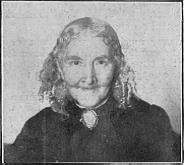Elizabeth Wolstenholme-Elmy
The full resource is FREE to all registered users of the website
If you are not already registered you can sign up for FREE website access to download the full resource.

- Born: 1833
- Died: 1918
- Occupation: teacher and reformer
- Claims to fame: key campaigner, Married Women’s Property Act 1882
Her background
Elizabeth was born in Manchester. She left school aged 16 and worked as a governess, then set up a girls’ school. She became a passionate advocate for girls’ education. In 1865, Elizabeth founded the Manchester Schoolmistresses Association, then the North of England Council for Promoting the Higher Education of Women. The Council's work led directly to the University Extension Movement and, by providing lectures for women in Cambridge, to the foundation of Newnham College. In 1866, she signed the women’s suffrage petition and gave evidence to the first Royal Commission set up to look at secondary education.
As a suffragist
Elizabeth was a member of the Kensington Society and collected 300 signatures for the petition from women in the north. She formed the Women's Franchise League (WFraL) with other Manchester radicals and set up the Women’s Emancipation Union (WEU). Elizabeth supported rights for married women as well as single women, which was not always popular at the time. She was very supportive of the WSPU from its earliest days, taking part in processions and appearing in photographs and interviews to help with propaganda. She became known as the oldest suffragist still supporting the cause. She did not believe in marriage and lived with Ben Elmy. When she became pregnant, they had a civil marriage, due to pressure. Her lifestyle meant that many people, especially women, would not associate with her and she has been ignored as one of the key early campaigners for women as a result.
Glossary
- Newnham College – the first formal university for women
- Kensington Society – women’s discussion group that organised the first petition on women’s suffrage
Questions
- Why do you think that Elizabeth, through education, was so important for girls?
- Do you think Elizabeth was a typical suffragist?
- Why might her lifestyle have shocked people at that time?
Useful resources
- Elizabeth Crawford, The Women’s Suffrage Movement: a reference guide, 1866–1928 (Routledge, 1999)
- Maureen Wright, Elizabeth Wolstenholme-Elmy and the Victorian Feminist Movement: the biography of an insurgent woman (Manchester University Press, 2011)
- Poster attached in The Sphere, 3 November 1906
- Elizabeth Wolstenholme-Elmy, ‘Honour to whom honour is due’, Votes for Women, December 1907
